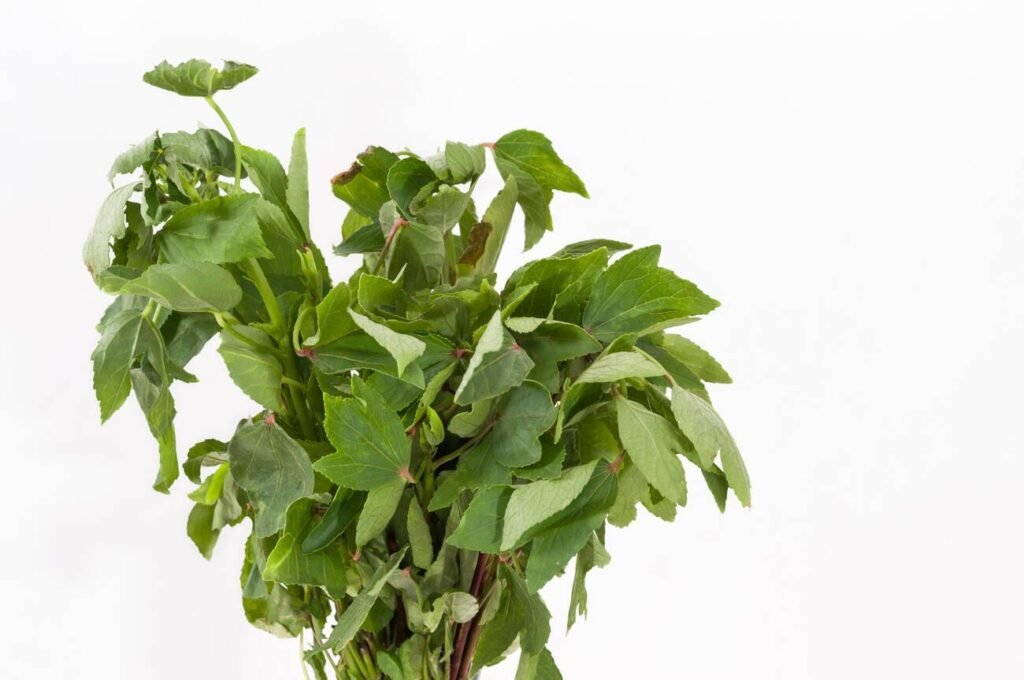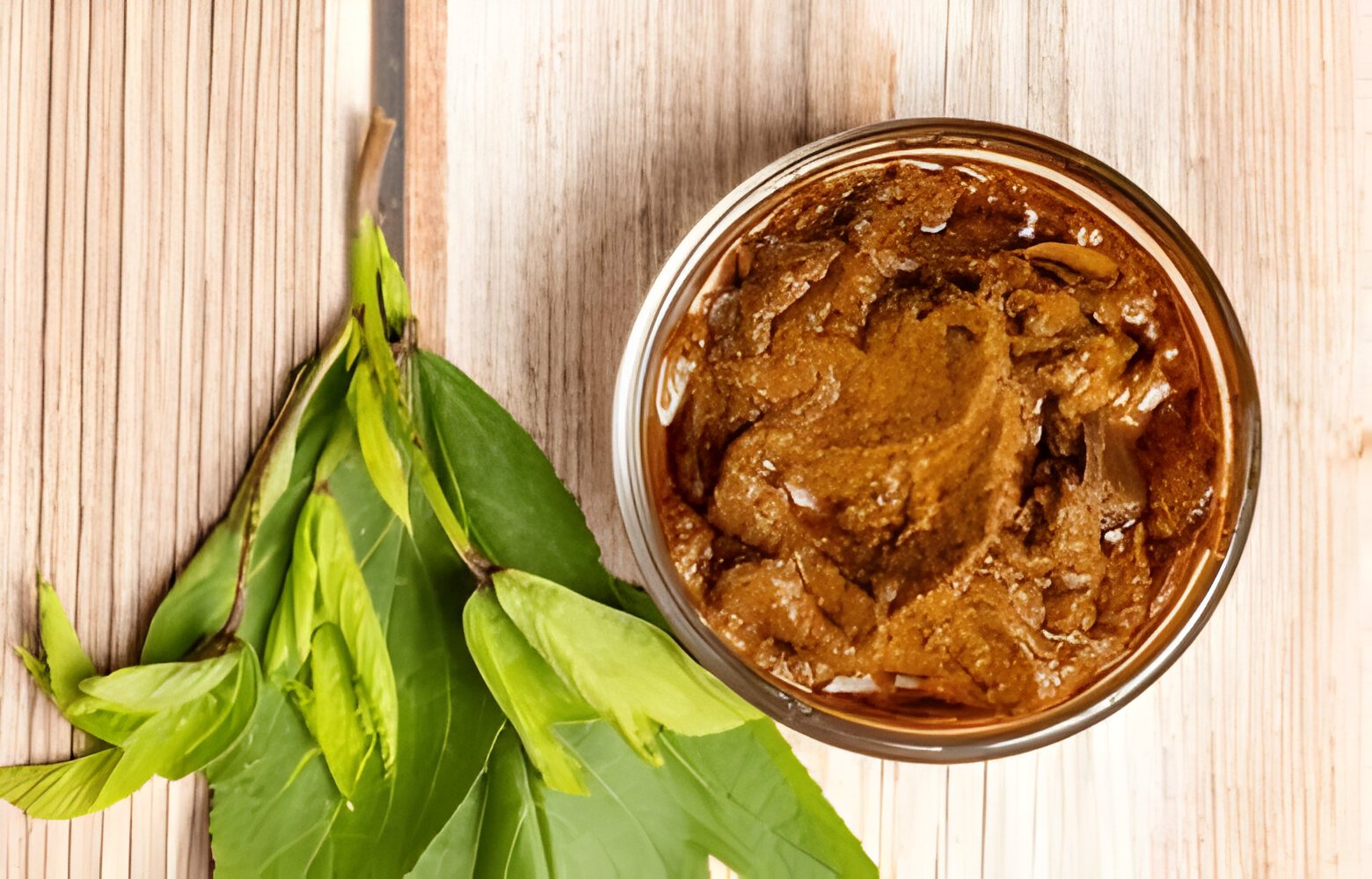Image Credit: Shutterstock
In the vast spectrum of nutrient-rich greens, gongura, a leafy plant heralded for its distinctive tangy flavor, stands out not merely as a culinary delight but as a powerhouse of essential nutrients. Known both for its versatility in dishes like gongura pachadi and gongura chicken and for the health benefits it confers, gongura, referred to as sorrel leaves in English, occupies a hallowed place in the diets of those seeking both taste and nutrition. Rich in vitamins, folic acid, zinc, and antioxidants, this leafy vegetable is more than just an ingredient for a spicy chutney or a savory curry; it’s a gateway to a healthier lifestyle.
The ensuing article delves into the historical and cultural significance of gongura, offering a glimpse into its esteemed place in various cuisines and traditions. Additionally, a detailed nutritional breakdown highlights its rich composition, including folic acid, riboflavin, vitamins, and zinc, reinforcing its status as a superfood. Subsequent sections present health benefits backed by research, ranging from promoting heart health to enhancing vision, alongside personal experiences and testimonials from individuals who have woven gongura into their daily diets. Through this exploration, readers will gain a comprehensive understanding of why gongura deserves a prominent spot on their plates, transcending its role from a mere ingredient to a catalyst for a healthier life.
Historical and Cultural Significance of Gongura

Origin and History
Gongura, scientifically known as Hibiscus cannabinus, is native to Africa and Southeast Asia and belongs to the Hibiscus family. It has been widely cultivated and utilized in India, particularly in the states of Andhra Pradesh and Telangana. The plant is also grown in other countries like Fiji, and in regions such as northern Uganda and parts of Assam, where it is known by various local names.
Cultural Importance in Various Regions
In many cultures, gongura transcends its culinary uses, symbolizing prosperity and good fortune. It is often integral to traditional festivals and celebrations, particularly in Andhra Pradesh where it is deeply embedded in the local traditions and culinary practices. Gongura festivals are organized to celebrate its versatility, bringing together chefs, farmers, and food enthusiasts. These festivals not only highlight the culinary diversity of gongura but also promote sustainable farming practices and the exchange of cultural heritage.
Traditional Uses in Cuisine
Gongura is a staple in Andhra and Telangana cuisine, renowned for its distinct sour taste which adds a unique flavor to various dishes such as Gongura pappu (lentil dish), Gongura pickle, and Gongura chicken. The leaves are also used in making traditional dishes like Gongura Pachadi, a spicy and tangy chutney that is a beloved accompaniment in many meals across these regions. This leafy green is not only celebrated for its taste but also for its health benefits, including its high vitamin C content which is believed to alleviate symptoms of cold and cough and boost appetite.
Also Read: Why Do We Swing One’s Arms Helplessly? Explained
Nutritional Breakdown
Vitamins and Minerals Content
Gongura is enriched with a variety of vitamins and minerals, making it an excellent addition to a balanced diet. It contains high levels of Vitamin A, B1, B2, B9, and Vitamin C. Additionally, the leaves, stems, and flowers of the Gongura plant are sources of essential minerals such as calcium, potassium, magnesium, and iron. These nutrients are crucial for maintaining various bodily functions, including vision, immune response, and bone health.
Caloric Value
100 grams of raw Gongura leaves provide approximately 56 kilocalories. This low caloric content, combined with a high nutrient density, makes Gongura an ideal choice for those managing their energy intake without compromising on nutritional value.
Comparison with Other Leafy Greens
While no single green can dominate in all nutritional aspects, Gongura holds its own among popular leafy vegetables. It is particularly noted for its folate and zinc content, comparable to that found in spinach and kale. However, it is advisable to include a variety of greens in the diet to cover the spectrum of nutritional needs, as each type offers unique benefits. For instance, while kale is celebrated for its vitamin content, Gongura provides a competitive mix of vitamins and minerals essential for a healthy diet.
Health Benefits Backed by Research
Scientific studies on Gongura
Research indicates that gongura, or Hibiscus sabdariffa, exhibits significant antihypertensive properties. Studies have shown that hibiscus can reduce systolic blood pressure significantly, with effects comparable to antihypertensive medications. This reduction is attributed to the enhanced vasodilation and the inhibition of the angiotensin-converting enzyme by anthocyanins found in gongura.
Benefits for Digestive Health
Gongura is rich in dietary fiber, which aids in easing the digestive process and reducing fat absorption. This makes it beneficial for weight management and overall digestive health. Its high fiber content is also linked to reduced risks of health issues such as obesity and gastrointestinal disorders.
Impact on Heart Health
Gongura has been found to support heart health through various mechanisms. It aids in the reduction of low-density lipoprotein (LDL) levels and overall cholesterol, mitigating heart disease risks. Additionally, its antioxidant properties help in preventing oxidative stress, further promoting cardiovascular health. Studies involving animal models have shown that gongura extracts can inhibit blood clot formation and dilate blood vessels, which are crucial for preventing high blood pressure and related complications.
Personal Experiences and Testimonials
User Testimonials
Individuals from Andhra Pradesh and Telangana often express deep cultural ties to gongura, recounting memories of family gatherings centered around dishes like gongura pachadi and gongura chicken. One person recalls the anticipation of special family events where gongura was always the highlight, bringing a unique flavor and joy to the meals.
Personal Benefits Observed
Many users have noted significant health improvements after incorporating gongura into their diet. The high fiber content in gongura leaves has been praised for aiding digestion and supporting weight management. Additionally, the rich iron content has helped individuals combat anemia, while the antioxidants have contributed to better skin and hair health.
Culinary Experiments
Gongura’s versatility in cooking is widely celebrated. In Assam, it is used in traditional dishes with colocasia, while in Tamil Nadu, it adds zest to pulichakeerai masiyal and thokku. Home cooks and chefs alike experiment with gongura in various culinary preparations, appreciating its ability to transform simple ingredients into flavorful and nutritious meals.
Also Read: Hemi Walker Buying Guide: Top Models Reviewed
Conclusion
Through this comprehensive exploration, the myriad benefits and cultural significance of gongura, or Hibiscus cannabinus, have been highlighted, illustrating not just its nutritional superiority among leafy greens but also its deep-rooted connection to traditions and culinary practices. The dietary merits, imbued with vitamins, minerals, and antioxidants, establish gongura as a formidable ally in the pursuit of health, offering protective benefits against a range of conditions from hypertension to digestive issues. It’s clear that the integration of gongura into daily diets transcends mere taste, contributing significantly to a balanced, nutritious lifestyle.
Reflecting on the discussions, the call to embrace gongura is underscored by both its historical significance and documented health benefits. As individuals strive for healthier eating habits, incorporating gongura presents a delicious and nutritious avenue to enrich one’s diet, simultaneously paying homage to a heritage of culinary diversity. Thus, gongura stands not just as a symbol of cultural pride but as a testament to the symbiosis between traditional culinary practices and contemporary health consciousness, inviting further exploration and appreciation of its numerous benefits.
FAQs
1. Why is gongura beneficial to include in your diet?
Gongura, a staple in south-central Indian cuisine, is celebrated for its distinctive tart flavor. Available in both green and red stemmed varieties, with the red variety being the more sour of the two, gongura is packed with essential nutrients like iron, vitamins, folic acid, and antioxidants, all crucial for optimal health.
2. What nutrients are found in gongura?
Gongura is a nutritional powerhouse, rich in Vitamin A, Vitamin B1 (thiamine), Vitamin B2 (riboflavin), Vitamin B9 (folic acid), and Vitamin C. Additionally, it contains vital minerals such as calcium, potassium, magnesium, and iron, and is also high in dietary fiber.
3. Can gongura help with weight loss?
Yes, gongura can be beneficial for weight loss. Its leaves are rich in carbohydrates, fiber, and protein, which can help boost energy levels and promote a feeling of fullness. Including gongura in your diet can help reduce hunger pangs and cravings, supporting weight management efforts.
4. Do gongura leaves have an acidic or alkaline nature?
Gongura leaves are known for their mildly astringent, bitter, and refreshingly acidic taste, indicating their acidic nature.



Leave a Reply